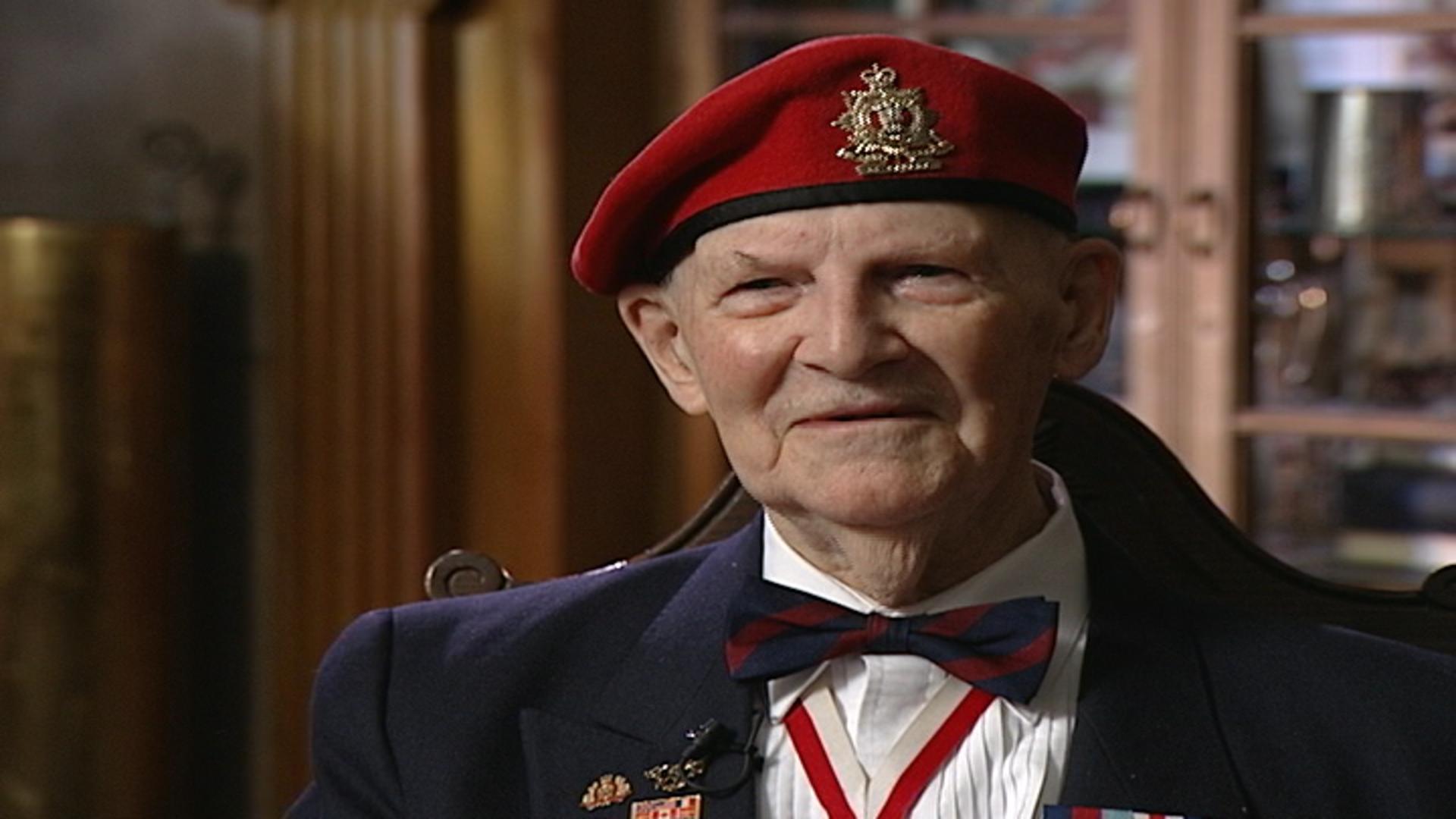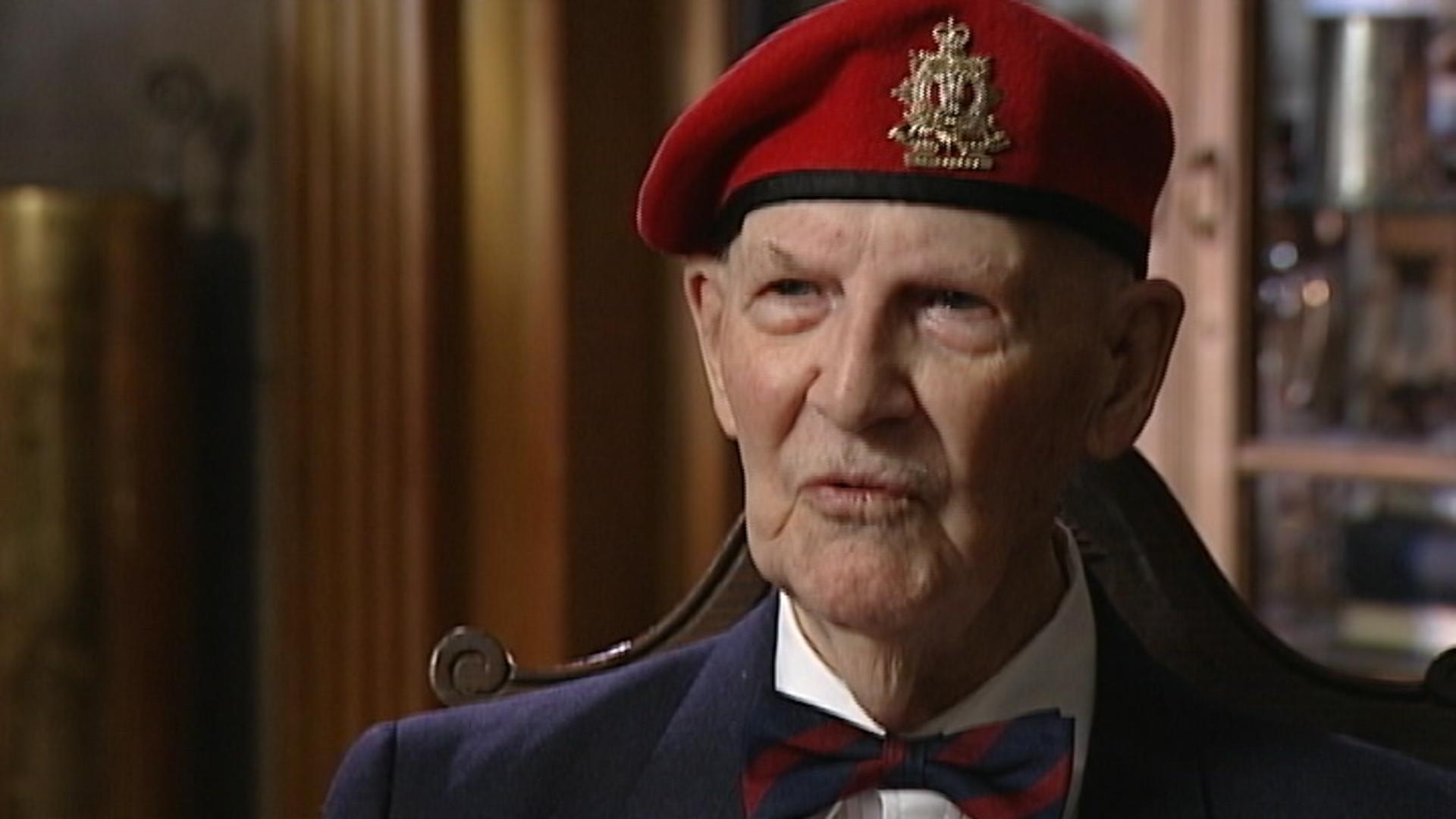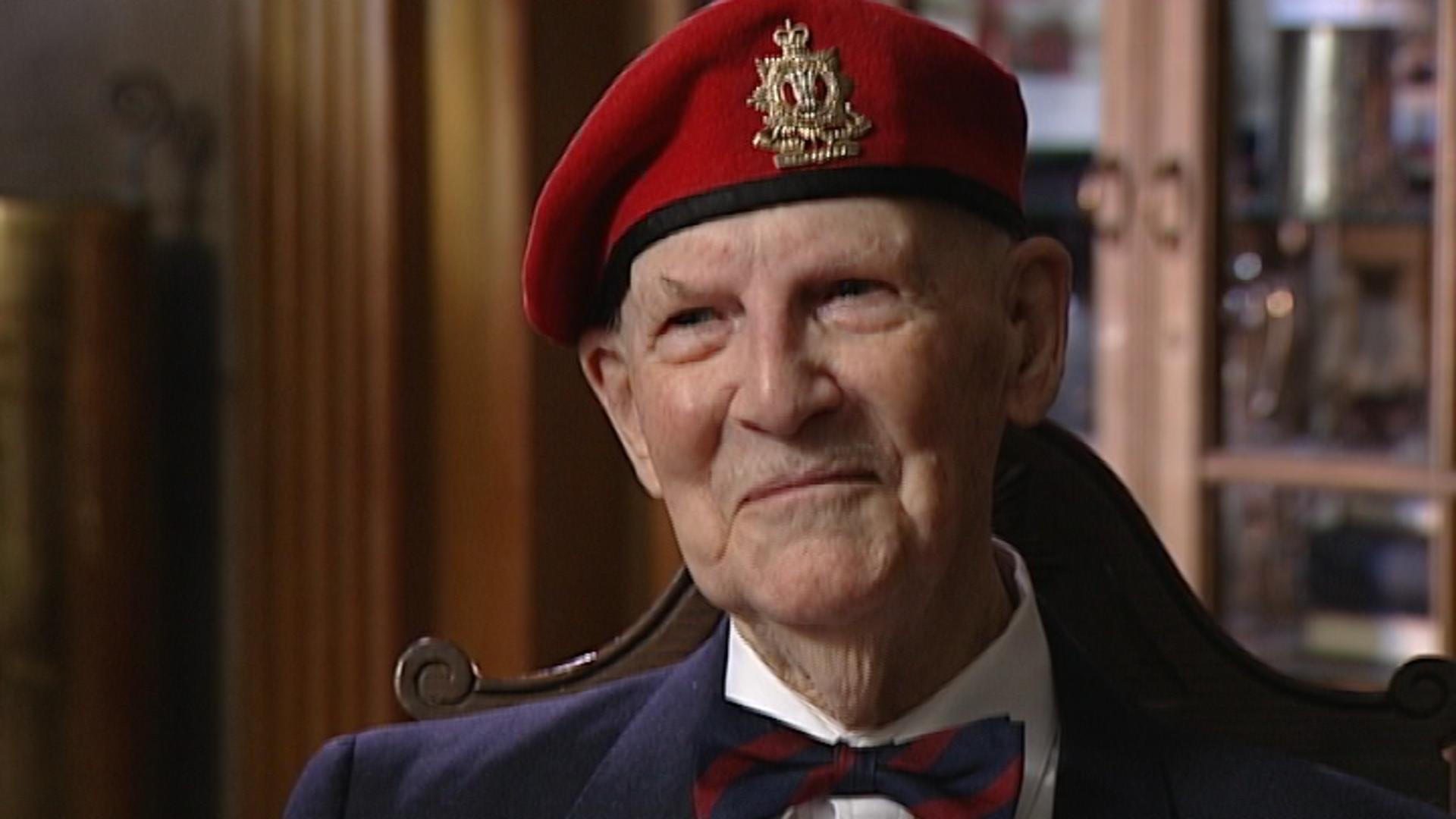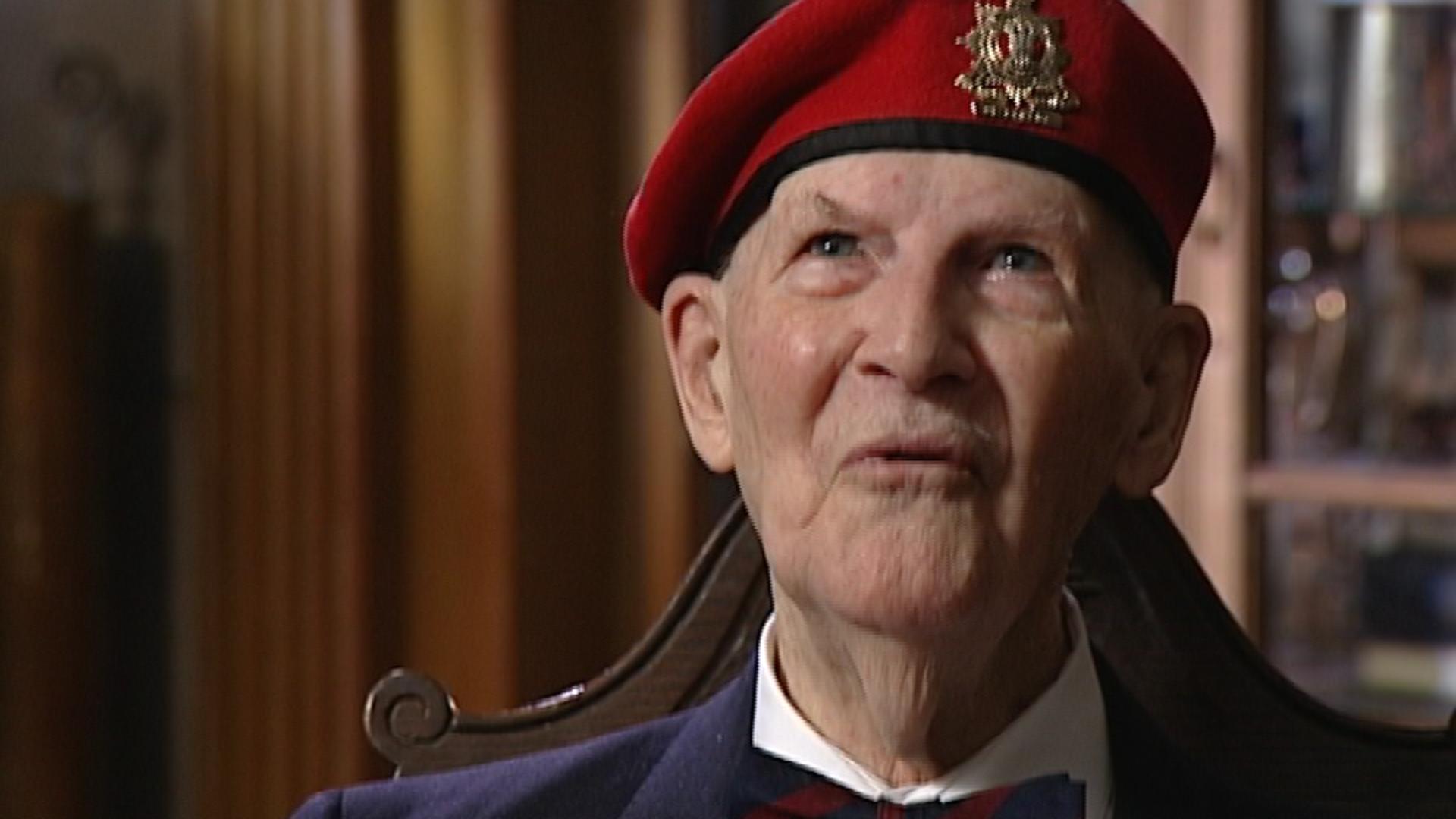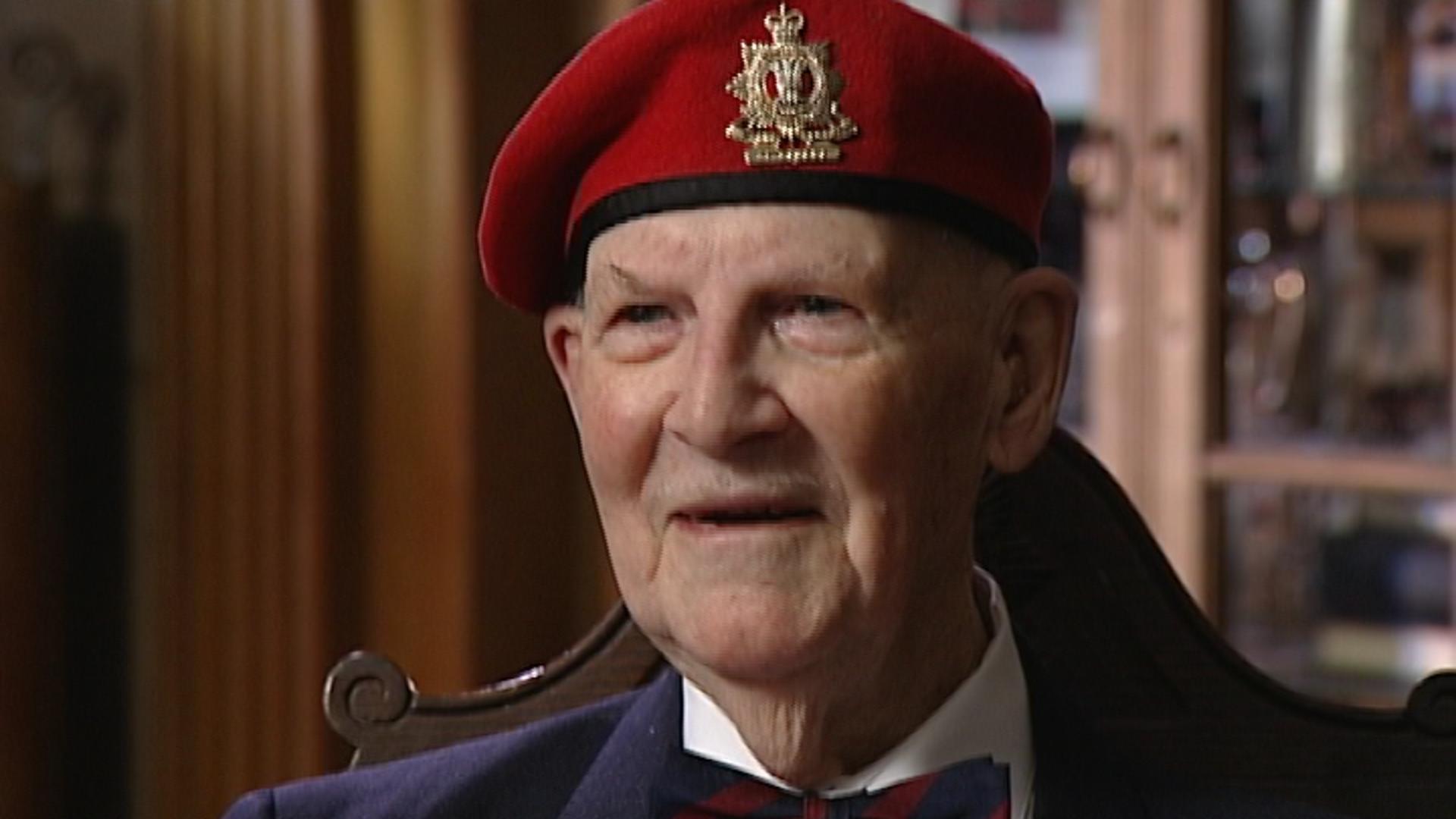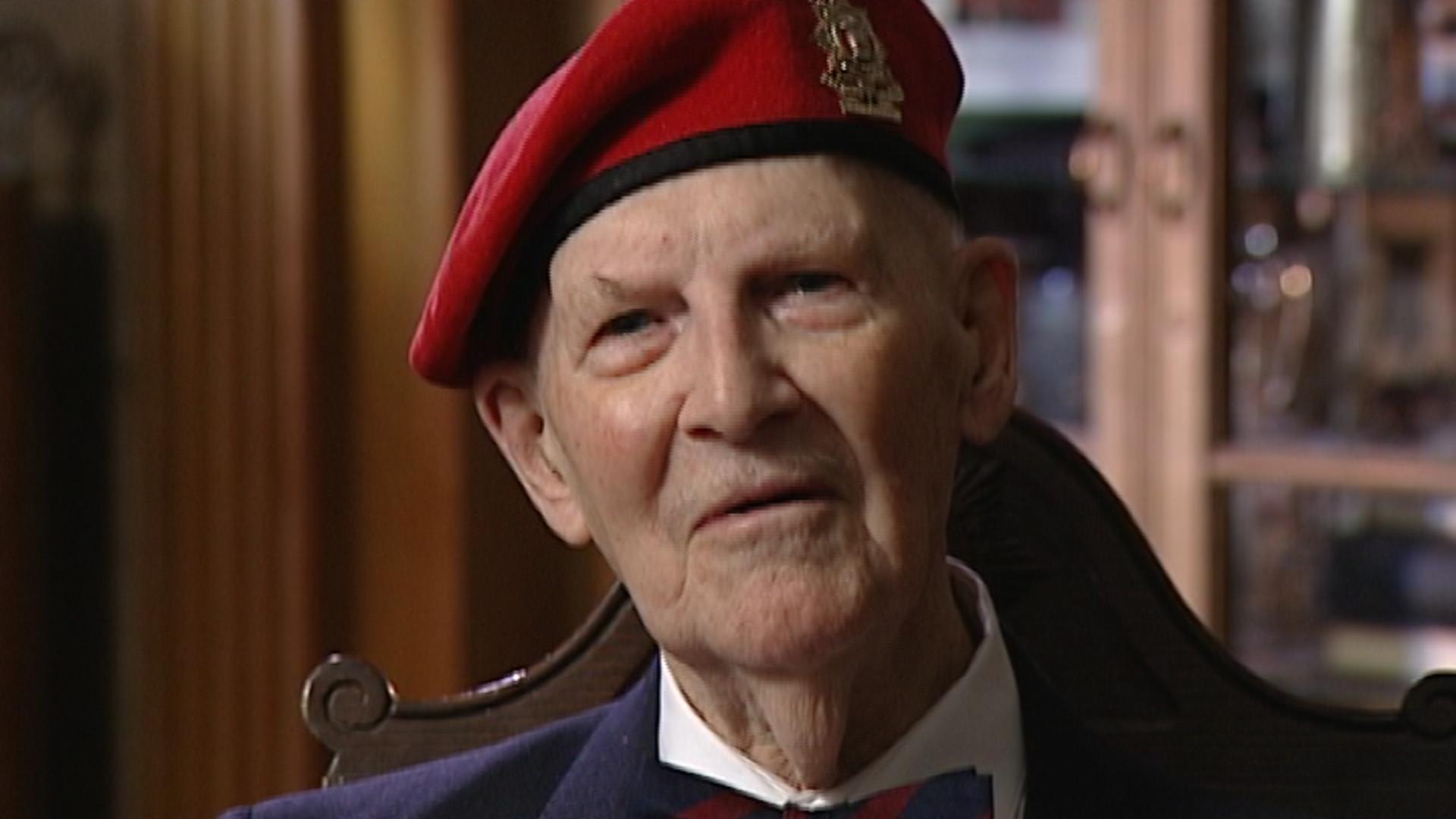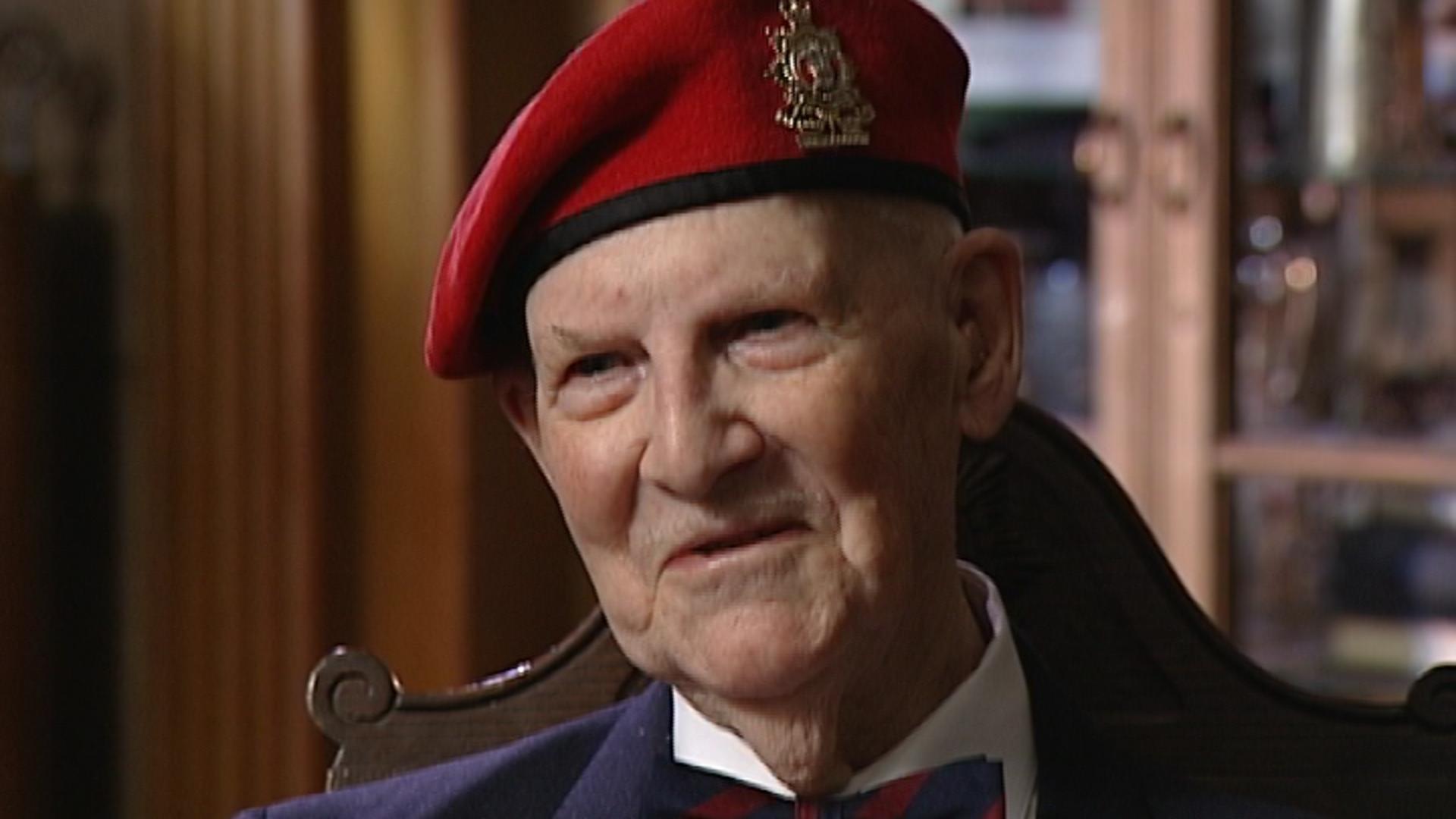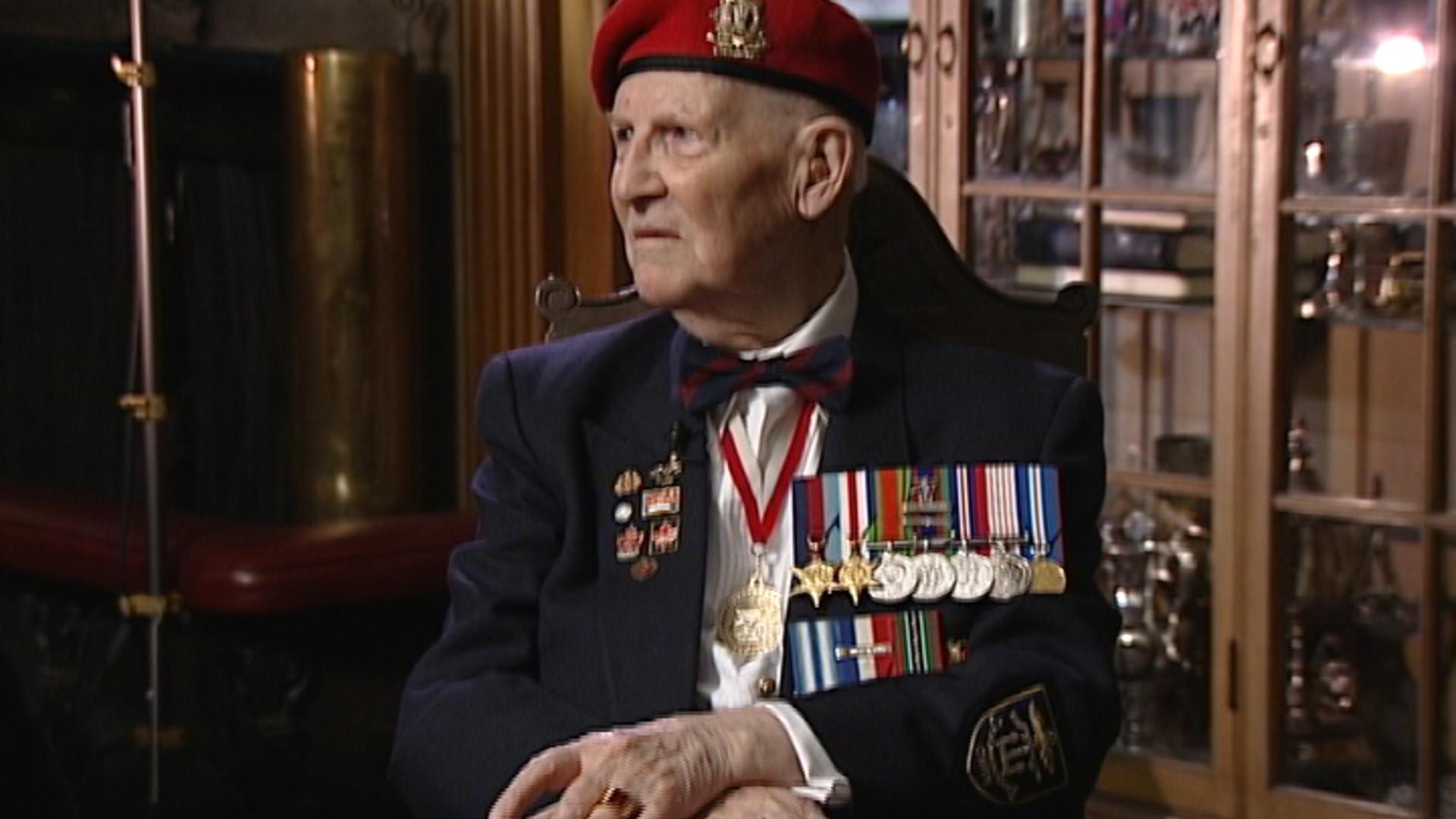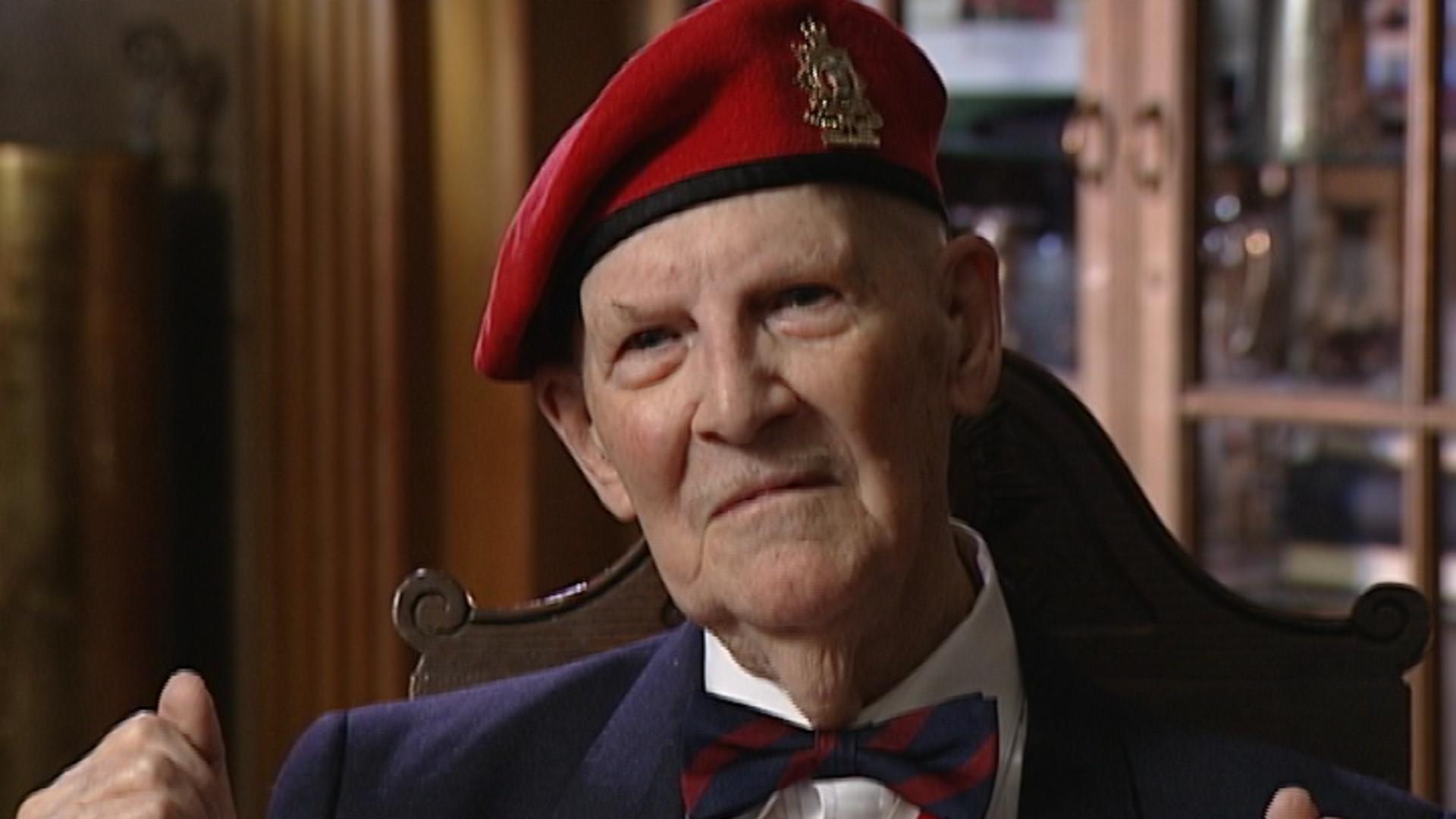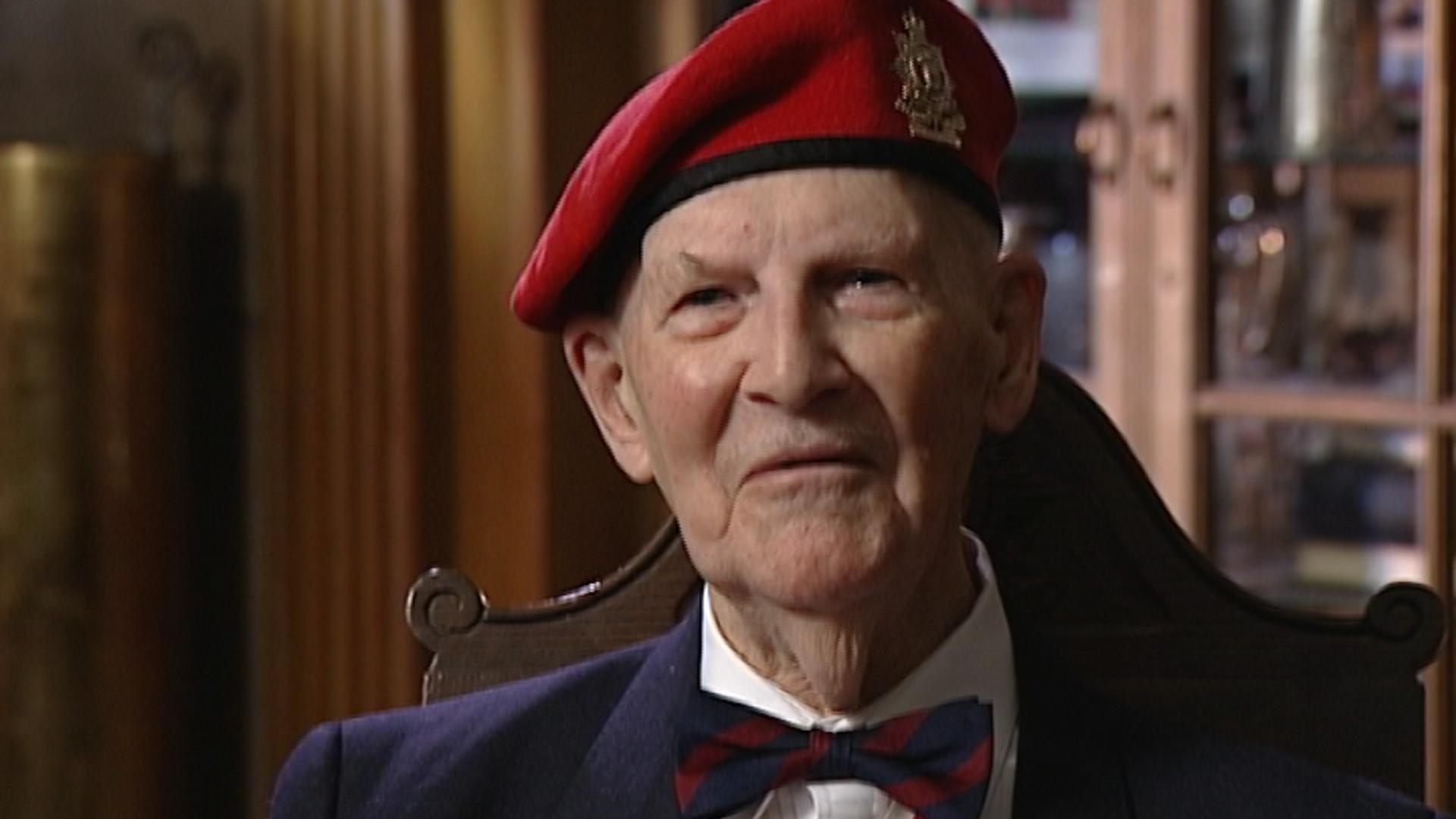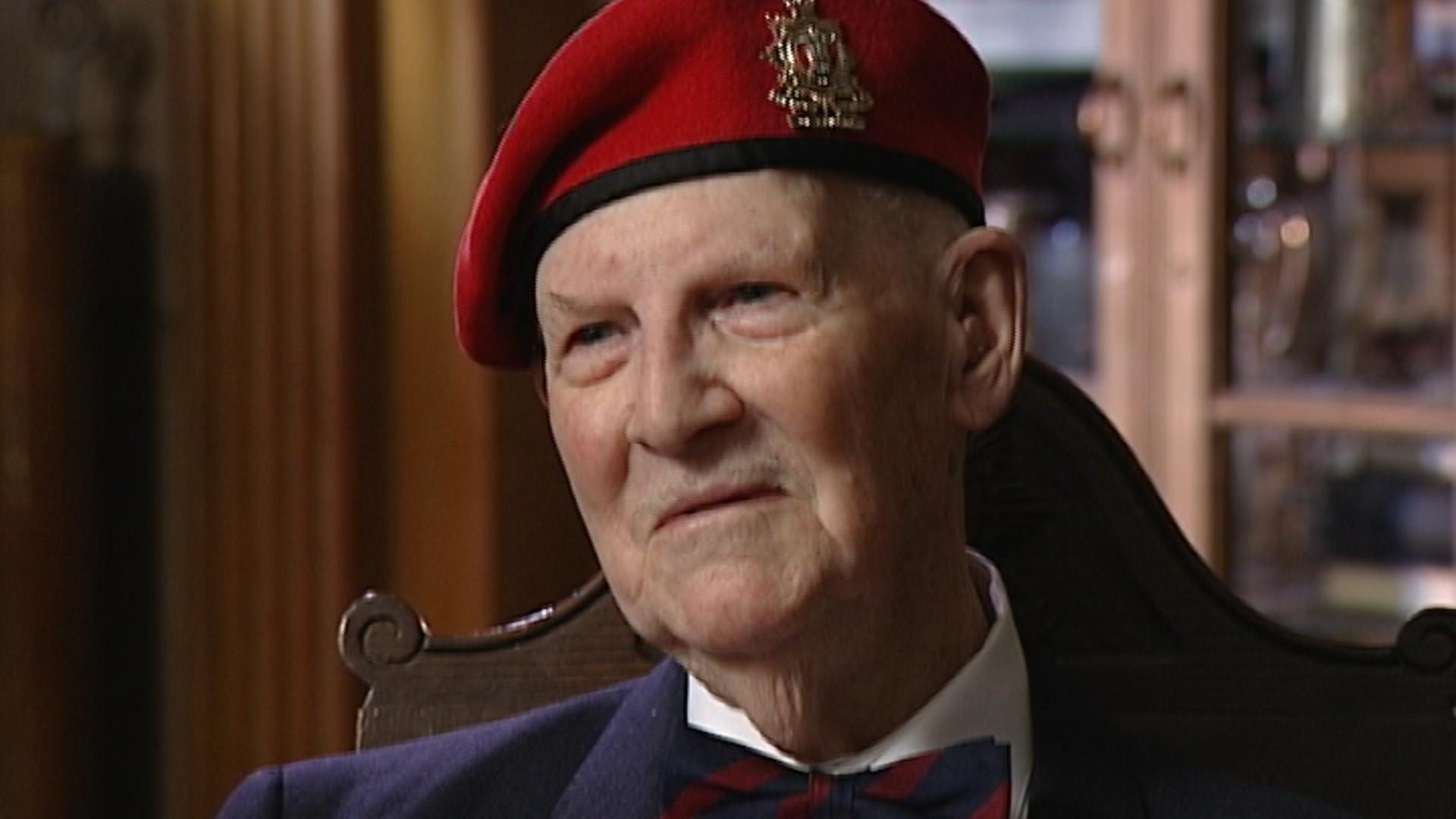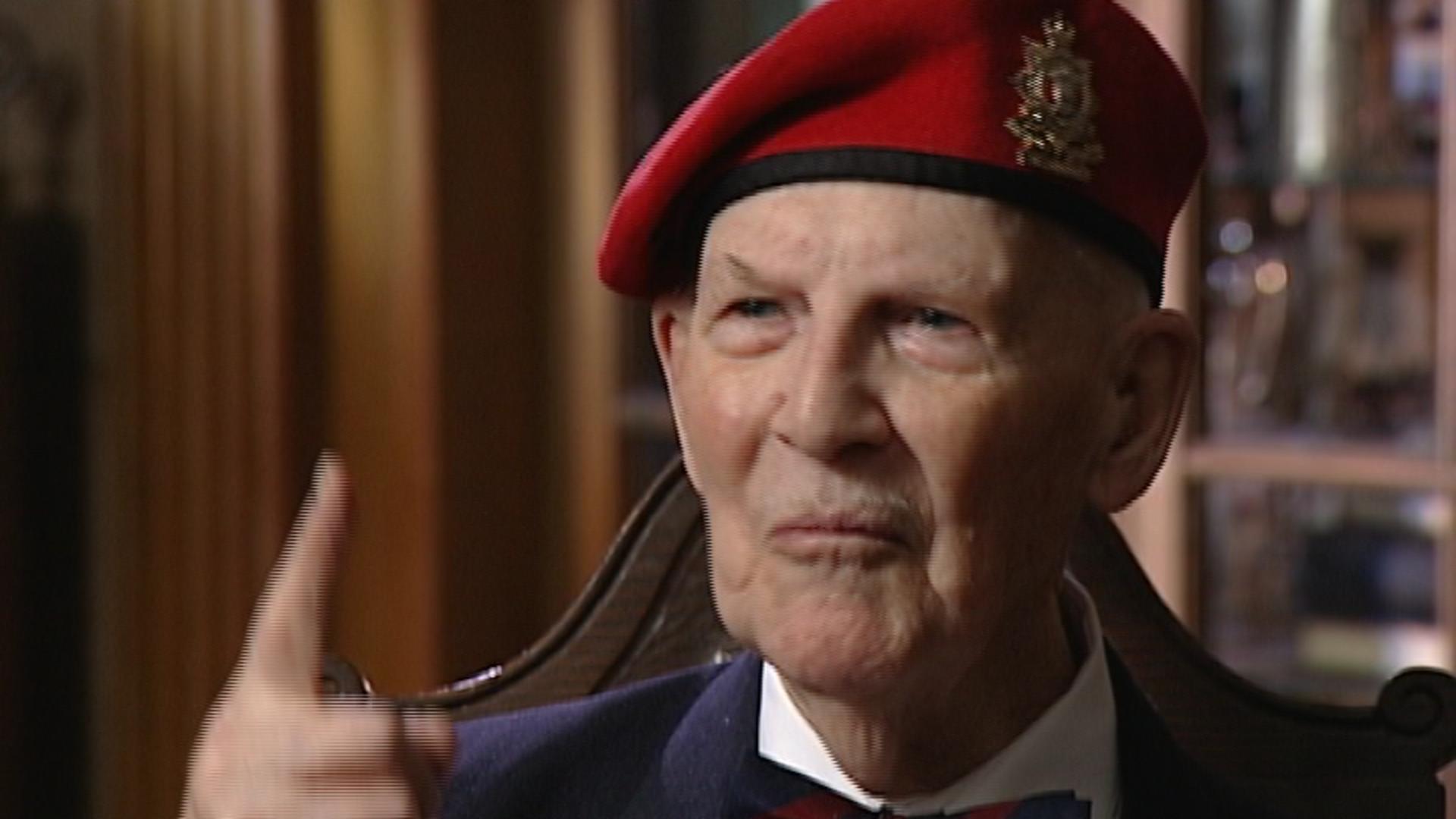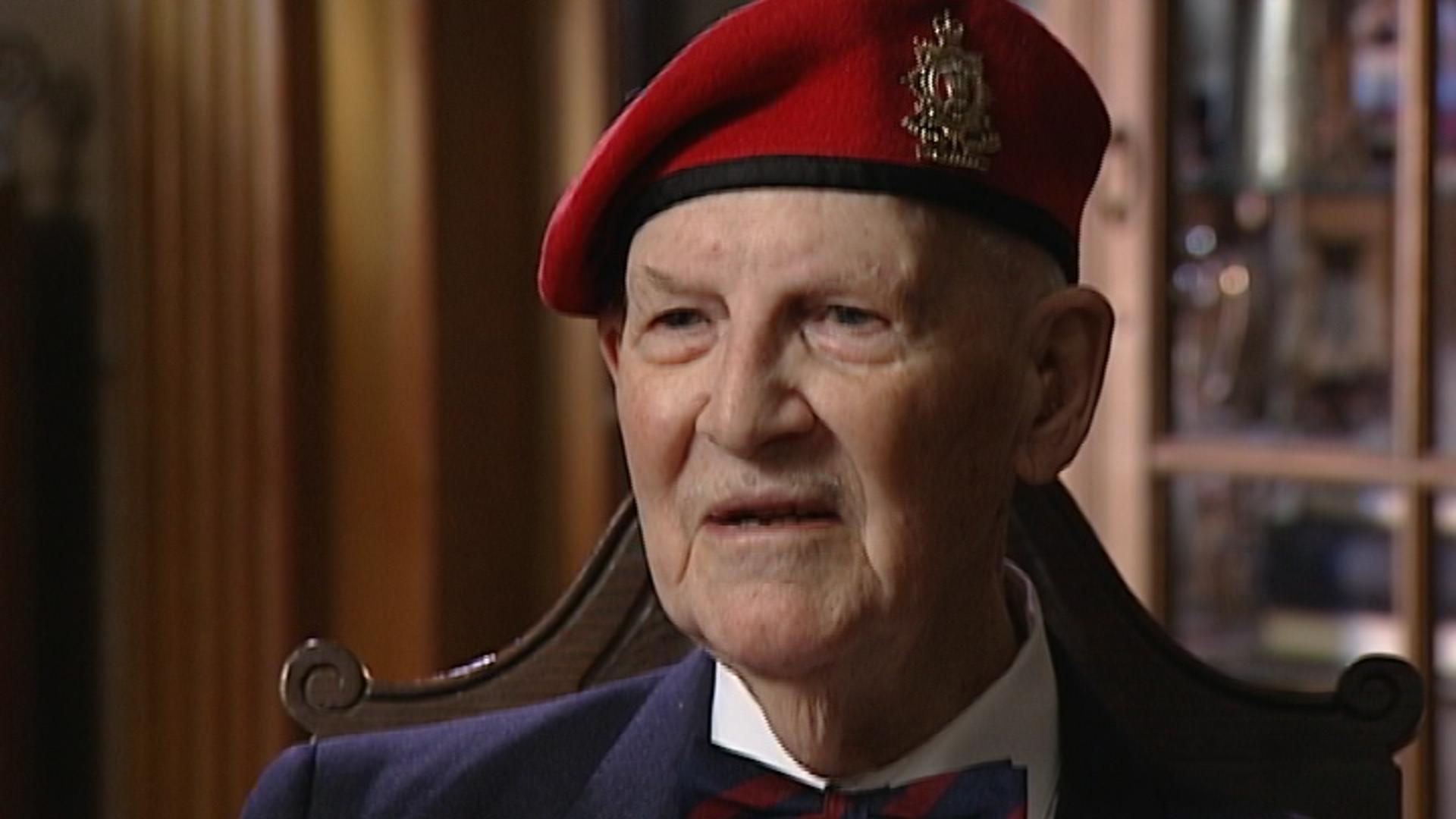The Dieppe personnel dug a tunnel
two beds from mine, under the bed.
A tunnel from there right under the
guard’s tower into the tree right across
under the path where the Germans marched
down every day and into the trees.
I worked on an escape committee.
I drew all the maps for the people who
went out Stalag Gate B air force
wherever they came in.
So I drew all the maps for
them because we used to get…
we had one good map.
I used to have to trace it in tissue paper
off of that good map and make it up
so that we had say two prisoners
come in from Italy, maybe they are officers,
maybe they are sergeants,
they would go to the front lazaret where
they questioned them and locked them up
until they decided where
they go in their compound.
We would break into that compound and
it’s important especially if they are
flying officers or someone has just
been shot down where you want to get
them back with the information as soon
as we can if we can
possibly do an escape.
So we make all this stuff up,
they have the passports and
everything they make up in the camp.
We had everything going there and
I have to draw the maps for them,
give them the maps and then we
dug the tunnel and then at the appropriate
time we change over like he comes in tonight,
tomorrow they’re going to question you.
So we got a guy here,
he hasn’t have any particular,
no wife or he’s single,
he’ll change over so now he’s
the right size and everything,
they don’t have any credentials.
We get him through the wire,
he gets down to the compound,
he changes uniforms.
The other guy becomes him and
he puts on the air force uniform and
becomes an air force pilot with his
name and the other guy comes
back to our compound.
Now he’s in the army uniform,
we give him all the papers,
we give him all the directions in what to
contact and everything else and
we feed him through the tunnel.
And we feed him through in daytime,
not at night time.
You know about ten feet from the
guard’s tower, you see the trap door
pushes open, out comes a couple of guys,
civilians, suitcases and they close
the trap door.
They wander down the pathway past
the guards and in through the bush and
away they are gone.
They are the guys that we escape,
they’re gone so the trap door is all…
they cut that out there, they lowered
it down and they put all the vegetation
on top so we just push it back up and
it’s a growing, it doesn’t die.
We have to keep it alive.
Now this went on for almost a year and
we got a lot of guys out of there.
Guys that came back from Italy,
pilots shot down.
We were not allowed to go through it
because we were of no use to anybody.
These were useful people, some got back,
some got to Czechoslovakia and
joined Tito’s Forces and got information back
but it was all to get back to the
underground as quickly as possible and
get the information back to England and
that was the idea of it.
That’s how we got these places to bomb,
a lot of it that’s how it got through.



